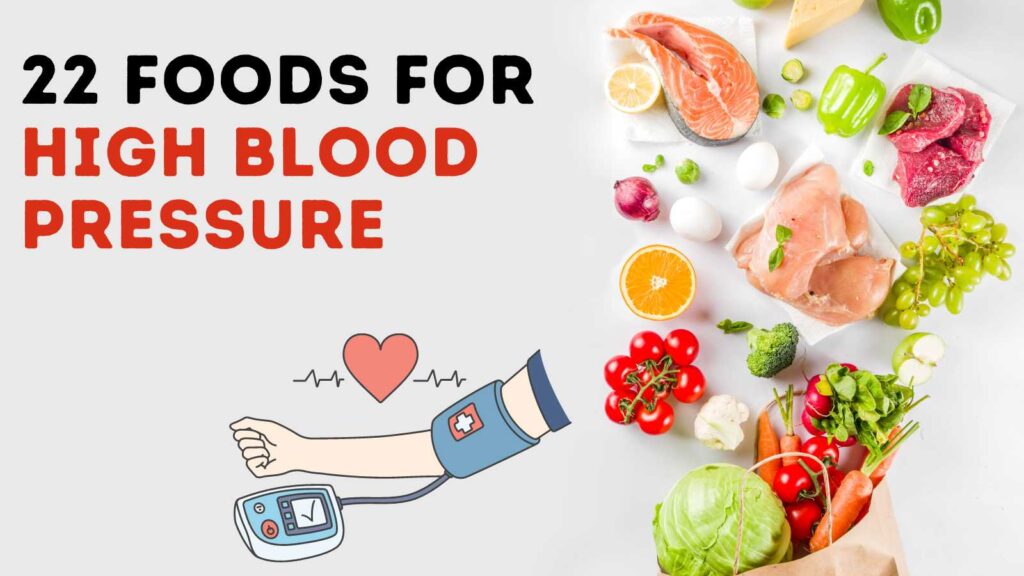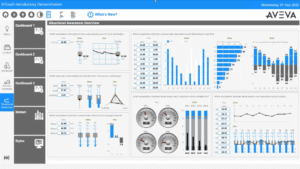Top 7 Foods to Lower High Blood Pressure and Boost Heart Health Naturally:-
High blood pressure, or hypertension, is a common health condition that significantly increases the risk of heart disease and stroke. Managing blood pressure through diet is one of the most effective and natural ways to protect your heart and overall health. If you’re looking for foods to reduce high blood pressure, a 7-day diet plan for high blood pressure, or wondering about high blood pressure foods to avoid, this guide will introduce you to the top 7 foods that help lower blood pressure naturally and sustainably. Plus, we’ll touch on the myth of the 1 food that kills high blood pressure and how to burn fat without exercise naturally.
1. Leafy Greens: Nature’s Blood Pressure Regulators
Leafy greens like spinach, kale, Swiss chard, and collard greens are rich in potassium and magnesium-two minerals essential for maintaining healthy blood pressure levels. Potassium helps balance the amount of sodium in your cells, which relaxes blood vessels and reduces pressure.
Why it works:
A 2022 study showed that for females with high sodium intake, every 1 gram increase in daily potassium was linked with a 2.4 mm Hg reduction in systolic blood pressure (SBP). Spinach, in particular, contains nitrates that convert into nitric oxide, a compound that helps dilate blood vessels and improve blood flow.
How to include: Add fresh spinach or kale to your salads, smoothies, or soups. Try sautéing Swiss chard as a side dish or blending leafy greens into your morning juice.
2. Fatty Fish: Omega-3 Powerhouse Fatty fish such as salmon, mackerel, and sardines are excellent sources of omega-3 fatty acids, which have anti-inflammatory properties and help reduce blood pressure.
Scientific insight: A 2022 review of 71 studies found that consuming 2 to 3 grams of omega-3 fats daily (roughly a 3.5-ounce serving of salmon) significantly lowered blood pressure. Omega-3s improve endothelial function and reduce arterial stiffness, key factors in hypertension.
How to include: Aim to eat fatty fish at least twice a week. Bake, grill, or steam salmon and pair it with vegetables for a heart-healthy meal.
3. Berries: Antioxidant-Rich Treats
Strawberries, blueberries, and raspberries are rich in anthocyanins, antioxidants that have been linked to lower blood pressure.
Research highlights: Studies show that these antioxidants help dilate blood vessels and reduce inflammation, contributing to better heart health. Eating berries regularly can modestly reduce both systolic and diastolic blood pressure.
How to include: Enjoy berries fresh as snacks, add them to yogurt or oatmeal, or blend them into smoothies.
4. Beets: Natural Nitrate Boosters
Beets are high in dietary nitrates, which the body converts into nitric oxide, a molecule that relaxes blood vessels and improves blood flow.
Clinical evidence: A 2021 study found that consuming beetroot juice lowered systolic blood pressure in healthy adults. Beets can be consumed as juice, roasted, or added raw to salads.
How to include: Try a glass of fresh beetroot juice in the morning or roast beets with your meals for a natural blood pressure boost.
5. Whole Grains: Fiber and Beta-Glucan Benefits
Whole grains like oats, brown rice, and quinoa contain beta-glucan, a type of soluble fiber that helps reduce blood pressure and cholesterol.
Why it matters: A diet rich in whole grains supports heart health by improving blood vessel function and reducing arterial stiffness. Oatmeal, in particular, has been shown to lower both systolic and diastolic blood pressure.
How to include: Start your day with a bowl of unsweetened oatmeal topped with fruits and nuts, or substitute white rice with brown rice or quinoa.
6. Low-Fat Dairy: Calcium and Potassium Sources
Low-fat milk, yogurt, and cheese provide calcium and potassium, minerals essential for blood pressure regulation.
Scientific support: The DASH diet (Dietary Approaches to Stop Hypertension) emphasizes low-fat dairy as a key component for lowering blood pressure. Studies suggest that consuming dairy products can modestly reduce hypertension risk.
How to include: Choose unsweetened Greek yogurt as a snack, add low-fat milk to your coffee or cereal, and use low-fat cheese in moderation.
7. Nuts and Seeds: Healthy Fats and Magnesium
Almonds, pistachios, flaxseeds, and chia seeds are rich in magnesium and healthy fats that support heart health and help reduce blood pressure.
Research findings: Magnesium helps relax blood vessels, and healthy fats reduce inflammation. Regular consumption of nuts and seeds has been associated with lower blood pressure and improved cardiovascular health.
How to include: Snack on a handful of unsalted nuts daily or sprinkle chia or flaxseeds on your salads, yogurt, or smoothies.
Foods to Avoid for High Blood Pressure
To complement the inclusion of these heart-healthy foods, it’s crucial to avoid high blood pressure foods to avoid such as:
Excessive salt and sodium: Processed foods, canned soups, and salty snacks.
Sugary foods and drinks: Soda, fruit juices with added sugar, desserts.
Red and processed meats: Sausages, bacon, and high-fat cuts.
Saturated and trans fats: Butter, margarine, fried foods.
Excess alcohol: Limits recommended are 1 drink per day for women and 2 for men.
High caffeine intake: Excess coffee or energy drinks can temporarily raise blood pressure.
7-Day Diet Plan for High Blood Pressure: A Sample
Here’s a simple 7 day diet plan for high blood pressure inspired by the DASH diet principles:
Day 1:
Breakfast: Oatmeal with berries and unsweetened yogurt
Lunch: Grilled salmon with quinoa and steamed broccoli
Dinner: Spinach and tomato salad with grilled chicken
Snacks: Unsalted nuts, fresh fruit
Day 2:
Breakfast: Whole wheat toast with avocado and boiled eggs
Lunch: Lentil soup with mixed vegetables
Dinner: Roasted beets and brown rice with sautéed kale
Snacks: Carrot sticks with hummus
Day 3:
Breakfast: Smoothie with banana, spinach, and flaxseeds
Lunch: Turkey and avocado wrap with whole grain tortilla
Dinner: Baked cod with sweet potato and green beans
Snacks: Mixed berries
…and so on, focusing on fruits, vegetables, whole grains, lean proteins, and healthy fats.
Myth: The “1 Food That Kills High Blood Pressure”
There is no single magic food that instantly cures high blood pressure. Instead, a balanced diet rich in the foods mentioned above, combined with lifestyle changes like regular physical activity, stress management, and avoiding harmful habits, is the most effective and sustainable way to control hypertension.
How to Burn Fat Without Exercise Naturally
If you’re wondering how to burn fat without exercise naturally, diet plays a pivotal role. Eating nutrient-dense, low-calorie foods that boost metabolism-such as green tea, chili peppers, and protein-rich foods-can help. Staying hydrated, getting enough sleep, and reducing stress also contribute to fat loss and better blood pressure control.
Final Thoughts
Incorporating these foods to reduce high blood pressure into your daily diet, while avoiding harmful items, can help you lower your blood pressure naturally and improve heart health. Use a 7 day diet plan for high blood pressure as a starting point and adopt sustainable habits for long-term benefits. Remember, there is no quick fix or 1 food that kills high blood pressure, but consistent healthy choices will make a significant difference.
Related posts:
 How to Lose Weight Fast Naturally and Permanently ?
How to Lose Weight Fast Naturally and Permanently ?
 10 Proven Ways to Reduce Stress and Improve Mental Health Naturally
10 Proven Ways to Reduce Stress and Improve Mental Health Naturally
 What to Eat to Lower Blood Sugar Immediately: A Quick Guide
What to Eat to Lower Blood Sugar Immediately: A Quick Guide
 What Is Contoura Vision Eye Surgery?
What Is Contoura Vision Eye Surgery?
 Top 10 Pathology Labs for Blood Test in Bangalore: A Comprehensive Guide
Top 10 Pathology Labs for Blood Test in Bangalore: A Comprehensive Guide
 Parent Training in ABA Therapy: Building Skills, Strengthening Bonds
Parent Training in ABA Therapy: Building Skills, Strengthening Bonds
 Choosing an Invisalign Dentist: 5 Things I Wish I Knew First
Choosing an Invisalign Dentist: 5 Things I Wish I Knew First
 Bacopa Monnieri: Helping Combat Early Signs of Alzheimer’s Disease in the Philippines
Bacopa Monnieri: Helping Combat Early Signs of Alzheimer’s Disease in the Philippines







